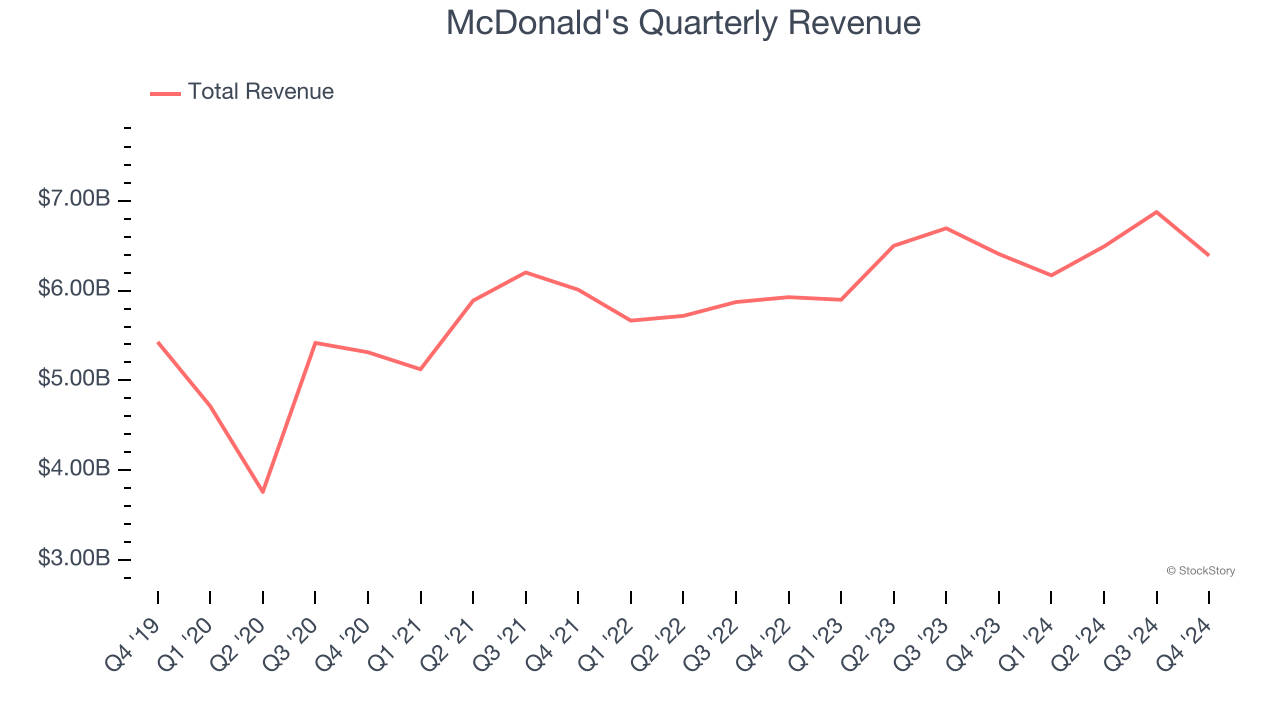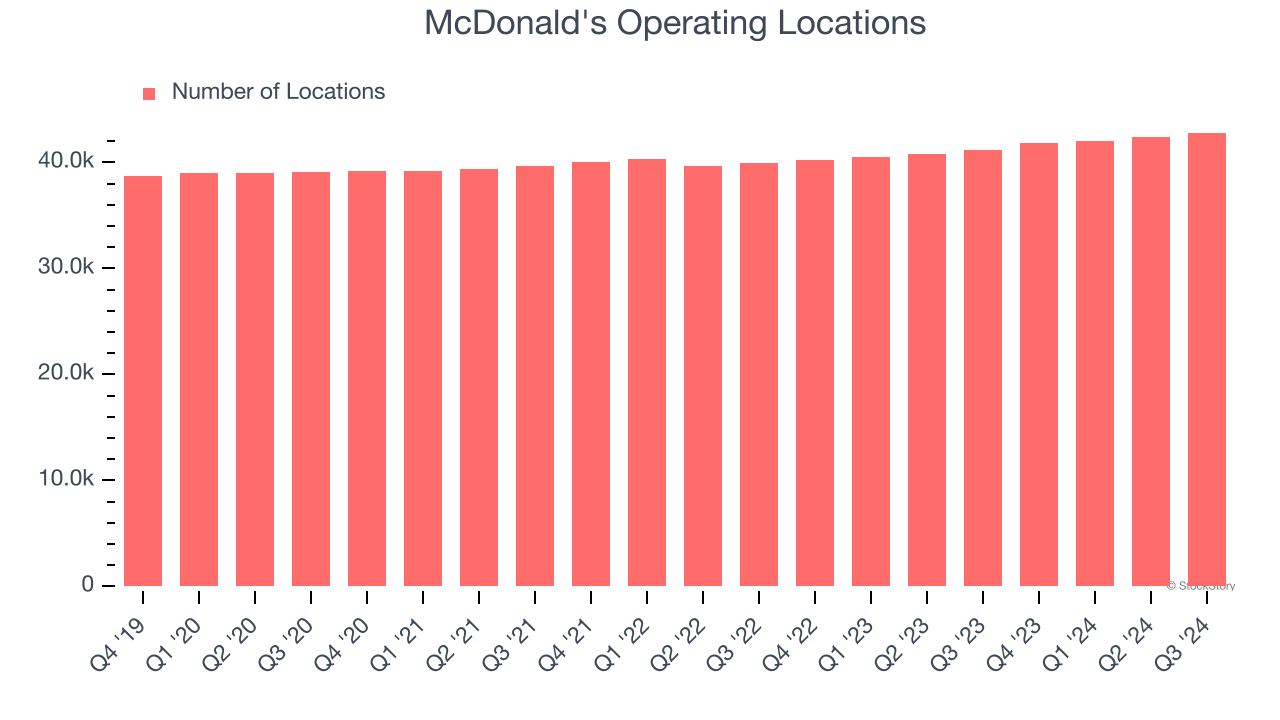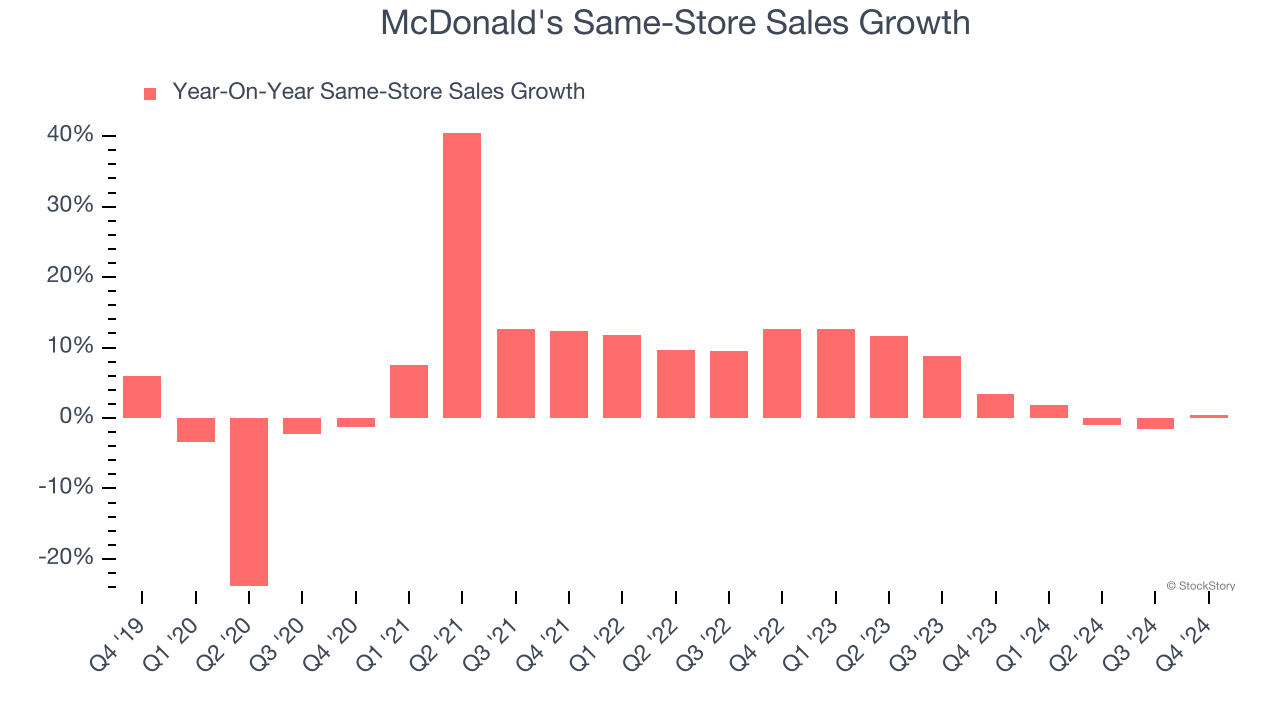
Fast-food chain McDonald’s (NYSE: MCD) missed Wall Street’s revenue expectations in Q4 CY2024, with sales flat year on year at $6.39 billion. Its non-GAAP profit of $2.83 per share was 1% below analysts’ consensus estimates.
Is now the time to buy McDonald's? Find out by accessing our full research report, it’s free.
McDonald's (MCD) Q4 CY2024 Highlights:
- Revenue: $6.39 billion vs analyst estimates of $6.46 billion (flat year on year, 1.1% miss)
- Adjusted EPS: $2.83 vs analyst expectations of $2.86 (1% miss)
- Operating Margin: 44.9%, up from 43.7% in the same quarter last year
- Same-Store Sales were flat year on year (3.4% in the same quarter last year)
- Market Capitalization: $210.9 billion
"Accelerating the Arches continues to be the right strategy as we focus on growing market share," said Chairman and CEO Chris Kempczinski.
Company Overview
With nicknames spanning Mickey D's in the U.S. to Makku in Japan, McDonald’s (NYSE: MCD) is a fast-food behemoth known for its convenience and broken ice cream machines.
Traditional Fast Food
Traditional fast-food restaurants are renowned for their speed and convenience, boasting menus filled with familiar and budget-friendly items. Their reputations for on-the-go consumption make them favored destinations for individuals and families needing a quick meal. This class of restaurants, however, is fighting the perception that their meals are unhealthy and made with inferior ingredients, a battle that's especially relevant today given the consumers increasing focus on health and wellness.
Sales Growth
Reviewing a company’s long-term sales performance reveals insights into its quality. Any business can have short-term success, but a top-tier one grows for years.
With $25.92 billion in revenue over the past 12 months, McDonald's is one of the most widely recognized restaurant chains and benefits from customer loyalty, a luxury many don’t have. Its scale also gives it negotiating leverage with suppliers, enabling it to source its ingredients at a lower cost. However, its scale is a double-edged sword because there are only a finite of number places to build restaurants, making it harder to find incremental growth. To accelerate system-wide sales, McDonald's must lean into newer chains.
As you can see below, McDonald’s sales grew at a sluggish 3.9% compounded annual growth rate over the last five years (we compare to 2019 to normalize for COVID-19 impacts), but to its credit, it opened new restaurants and increased sales at existing, established dining locations.

This quarter, McDonald's missed Wall Street’s estimates and reported a rather uninspiring 0.3% year-on-year revenue decline, generating $6.39 billion of revenue.
Looking ahead, sell-side analysts expect revenue to grow 3.1% over the next 12 months, similar to its five-year rate. This projection is underwhelming and indicates its newer menu offerings will not catalyze better top-line performance yet. At least the company is tracking well in other measures of financial health.
Software is eating the world and there is virtually no industry left that has been untouched by it. That drives increasing demand for tools helping software developers do their jobs, whether it be monitoring critical cloud infrastructure, integrating audio and video functionality, or ensuring smooth content streaming. Click here to access a free report on our 3 favorite stocks to play this generational megatrend.
Restaurant Performance
Number of Restaurants
The number of dining locations a restaurant chain operates is a critical driver of how quickly company-level sales can grow.
McDonald's opened new restaurants quickly over the last two years, averaging 3.1% annual growth, faster than the broader restaurant sector. Furthermore, one dynamic making expansion more seamless is the company’s franchise model, where franchisees are primarily responsible for opening new restaurants while McDonald's provides support.
When a chain opens new restaurants, it usually means it’s investing for growth because there’s healthy demand for its meals and there are markets where its concepts have few or no locations.
Note that McDonald's reports its restaurant count intermittently, so some data points are missing in the chart below.

Same-Store Sales
The change in a company's restaurant base only tells one side of the story. The other is the performance of its existing locations, which informs management teams whether they should expand or downsize their physical footprints. Same-store sales provides a deeper understanding of this issue because it measures organic growth at restaurants open for at least a year.
McDonald's has been one of the most successful restaurant chains over the last two years thanks to skyrocketing demand within its existing dining locations. On average, the company has posted exceptional year-on-year same-store sales growth of 4.5%. This performance suggests its rollout of new restaurants is beneficial for shareholders. We like this backdrop because it gives McDonald's multiple ways to win: revenue growth can come from new restaurants or increased foot traffic and higher sales per customer at existing locations.

In the latest quarter, McDonald’s year on year same-store sales were flat. This was a meaningful deceleration from its historical levels. We’ll be watching closely to see if McDonald's can reaccelerate growth.
Key Takeaways from McDonald’s Q4 Results
We enjoyed seeing McDonald's exceed analysts’ same-store sales expectations this quarter. On the other hand, its revenue and EPS both missed by about 1%. Overall, this was a weaker quarter. The stock remained flat at $296.42 immediately after reporting.
Should you buy the stock or not? What happened in the latest quarter matters, but not as much as longer-term business quality and valuation, when deciding whether to invest in this stock. We cover that in our actionable full research report which you can read here, it’s free.





